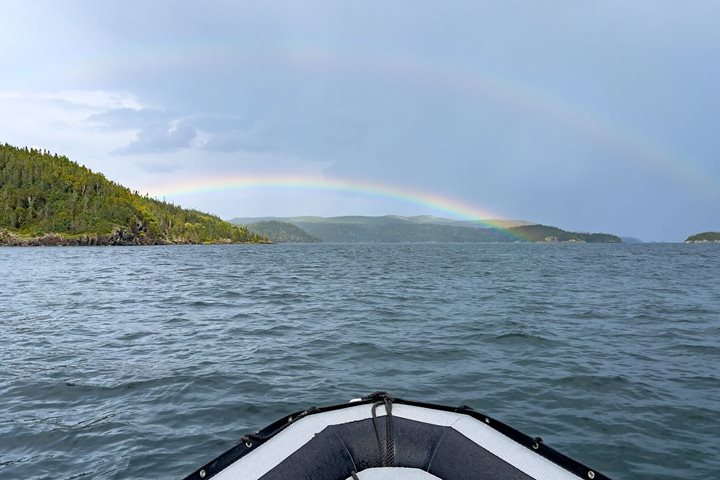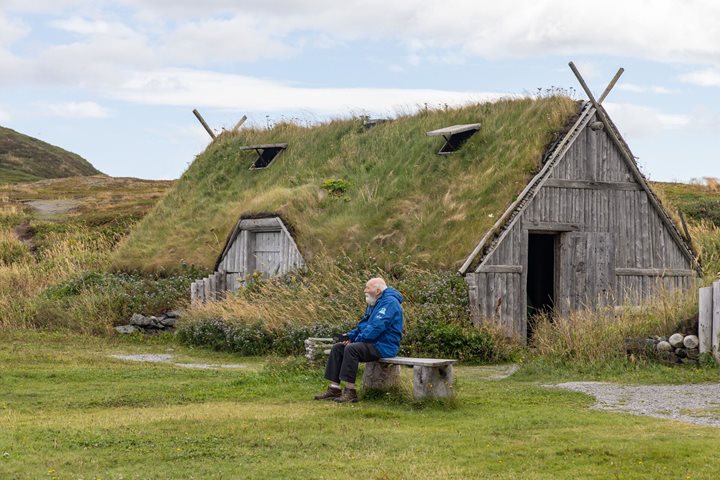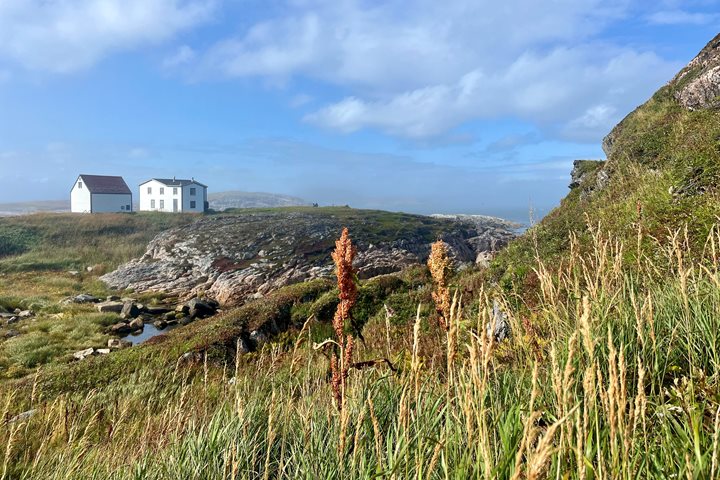In Greenlandic, Sisimiut means "the people at the burrows," a very well-known place for foxes. It has been inhabited for more than 4,000 years. The Saqqaq culture was the first in the area, followed by the Dorset culture, and later, the Thule people.
As the largest business center north of Nuuk, Greenland’s capital, Sisimiut is one of the fastest growing cities. The main activity is fishing, especially by shrimp fisheries. Leaving the pier and starting to walk around Sisimiut, we were impressed with a gigantic mural of carved rock in the shape of whales, seals, halibut, and waves. The size and detail were simply incredible.
We had many options to explore Sisimiut, from a nature hike to cultural walks. Some of us hiked on an island to see one of the oldest settlements in the area. We saw remains of peat houses, and we learned about the traditions and the ways of living in pure nature in the Arctic. At the Sisimiut Museum, we found a fascinating variety of artifacts collected during a ten-year archaeological research project, including excavations of the ancient Saqqaq settlements near the town. Exploring the different buildings of the museum, one gets a deep insight into the culture of the region over the last 4,000 years. We learned about the wildlife, traditional hunting techniques, and ways to survive in the harsh polar environment.
When arriving to Greenland, one cannot help but notice the very colorful houses. Originally, the colors were used to identify different structures. For instance, yellow was for a hospital, blue was for fisheries, red was for government, etc. Today, different colors are still used everywhere, and new ones have been added, such as turquoise blue, purple, and many others. These beautiful, colorful, and joyful houses leave us with remarkable images in our minds.
We ended our visit with a delicious food tasting, including muskox soup and meat, snow crabs, and a variety of dried fish, including capelin, halibut, and cod. What a great way to start our expedition!







